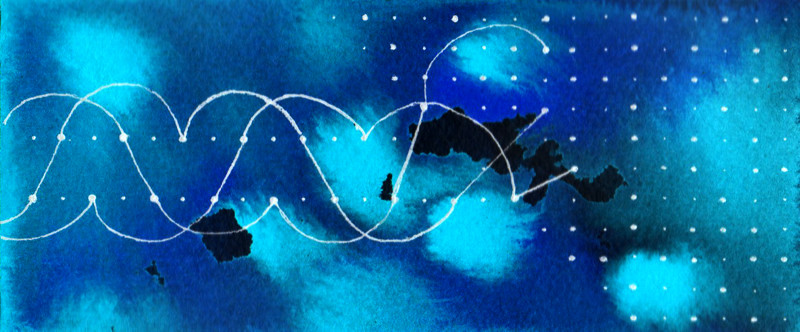Siteswap based vs rhythm based pattern notation

Table of Contents
Going forward, should I be using dNote or rhythmic catches? Siteswap based or rhythm based?
I need a pattern notation system that can deal with multiple manipulators and a mixture of synch and asynch juggling in a way that is more elegant than siteswap. Which of the systems I designed so far would be a better candidate?
Let’s compare dNote and Rhythmic Catches.
Pros and cons⌗
In short, what do dNote and Rhythmic Catches have going for or against it?
Pros dNote⌗
- Jugglers are already familiar with siteswap
- a dNote matrix can be compressed to a single line shorthand
Cons dNote⌗
- Holds need to be specified
- Single line shorthand is can be difficult to decode
- Patterns with zips may be confusing to write now that each hand is available on each beat. Should one write dNote
441or dNote(4,0)(1,3x)1x0*?
Pros Rhythmic Catches⌗
- Can be used to write juggling with rhythmical catching
- Can be used to write juggling with non rhythmical catching
- Can skip all holds in a notation
- Can be used to write hits.
Cons Rhythmic Catches⌗
- Is more difficult to compress
- May be a bit confusing at first if you’re used to siteswaps
Holds⌗
So what’s the deal with these holds? Why are they an issue in dNote?
In vanilla siteswap a hold is noted as a 2, it appears in patterns such as ss423. And this hold is not very redundant, it signifies that there is an empty beat and that the same throws twice in a row. However, in dNote the occurrence of holds is much higher, and in the matrix form the holds are arguably redundant.
dNote is designed to solve two problems with siteswap: To make it easy to transition from asynchronous to synchronous patterns, and to facilitate patterns with multiple manipulators such as when adding a foot catch to a pattern.
When transitioning from asynch to synch you will often get a short hold, such as a 1x, transitions with holds are the easiest transitions. For example when going from ss4 to ss(4,4) the easiest transition is probably ss5x41x.
When juggling with more than 2 manipulators on a single body, it is likely that the rhythm is just alternating left and right any more, or that the extra manipulator fits in that rhythm.
For example in this dNote foot catch pattern below (discussed here before) the order is left-right-foot, causing a bunch of holds when treating the throws as a 3.
L R F
3 1x 0
0 3F 1
1x 0 3-x
Or another example, this 4b elbow trap uses a 1x hold in the elbow and a 2 hold in the hands. I’ve experienced that these holds make it much harder to figure out what is going on in a pattern, making it difficult to write them down or to read them.
A final example is this stack slap sequence, which has many weird holds because it uses multiple manipulators (two knees) but also because balls are held in preparation for multiplexes. Patterns like these make a notation in which holds can be omitted desirable.
At last, what does a hold mean to begin with? The foot pattern above could also be written without holds as:
L R F
4x 0 0
0 4F 0
0 0 4-x
Is that the same pattern? Maybe. Similarly, is there a true difference between a ss423 and a ss603 or are they the same pattern with different dwell times? As we noticed in Siteswap and rhythm problems, siteswap is unsuitable to explain dwell times and rhythm. Therefor I say: Ditch the holds, let’s move to a system that doesn’t need them to begin with!
Conclusion⌗
Rhythmic Catches can be much more specific than dNote, and in its matrix form it can even be more elegant as it omits the holds. In its short form dNote may be more compact but this is only valuable when dNote can be nearly completely replaced with siteswaps, in other cases this short form is probably too confusing to read for humans. dNote can be more intuitive to understand if you already know a version of siteswaps, but I think this difference is insignificant in the long run. For me, the new features and less complex holds are more valuable at the moment.